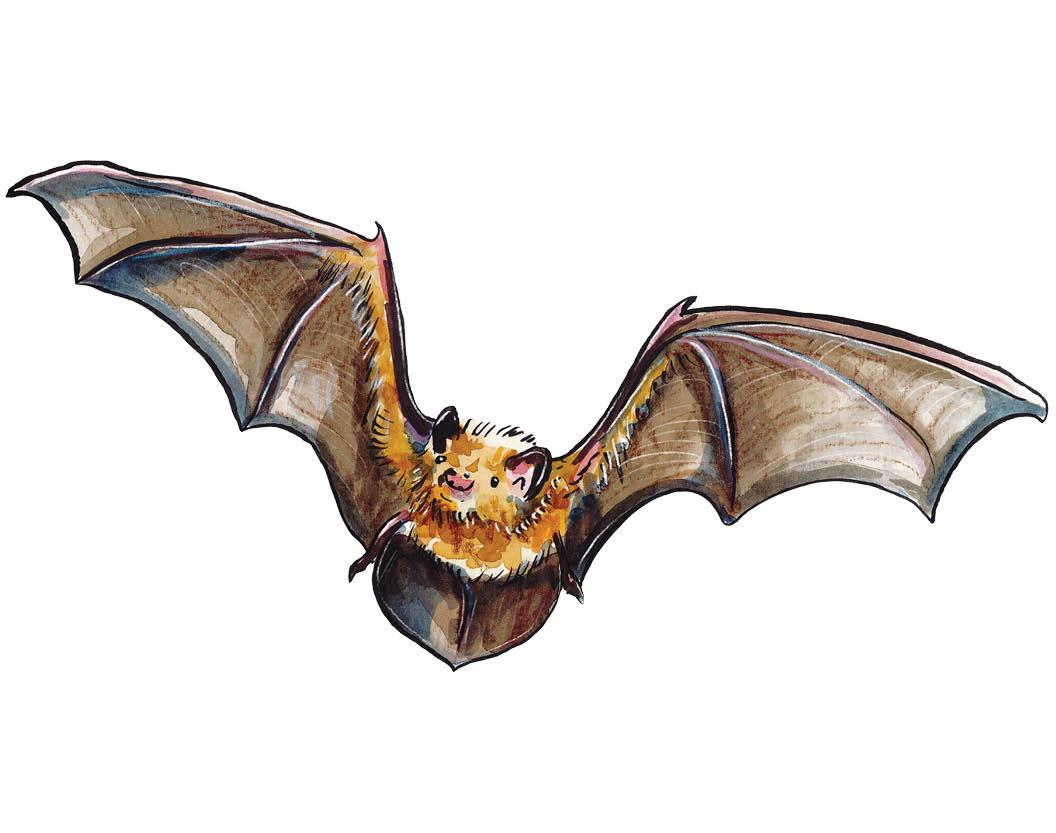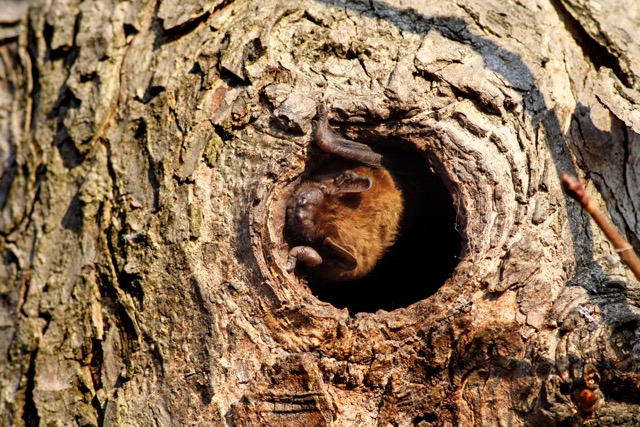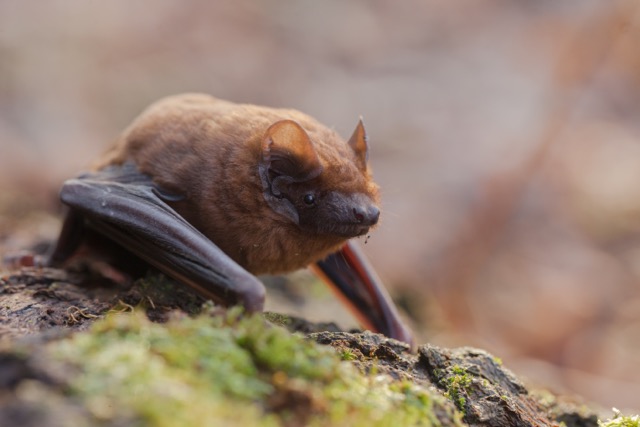
For March 2024, Wildcare's Species of the Month is the Noctule Bat (Nyctalus noctala).
Noctules are the largest resident species of bat in the UK, weighing up to 40g and with a wingspan comparable to a Blackbird. They are often the first to emerge from their roosts in the evening and fly higher in comparison to other bat species; above the tree canopy and with a strong, direct flight up to 50km/h.
If you have a bat detector, they are most easily identified by their very loud 'chip-chop' call, lower in ultrasonic frequency than other bats, peaking at 25kHz. They can even sometimes be heard by children!
If you're lucky enough to get up close to noctule, you'll see their broad head and ears with a mushroom-shaped tragus and dark golden-brown fur.

Where are they found?
Noctules are a common species and are widespread throughout England, Wales and South-west Scotland, though are absent from Ireland. They are strongly associated with broadleaved woodland, roosting in tree cavities or woodpecker holes and are regularly found in bat boxes, such as the Schwegler 1FF.
They hibernate in winter from November to April, usually in tree cavities or rock fissures but have been also found occasionally buildings and bat boxes. Once they emerge from hibernation, they form large, mixed-sex colonies but break up into smaller maternity colonies and bachelor groups through late Spring and Summer.

What do they eat?
Noctules feed on midges, moths and flying beetles and other flying insects. More intensive agricultural practices has been the cause of historic population declines of the Noctules in the UK. These practices have led to the loss of crucial feeding habitats, including permanent pasture, wooded areas and hedgerows which are traditionally rich in their invertebrate prey.
How can we help protect them?
Along with the other bat species in the UK, noctules are legally protected under the Wildlife and Countryside Act (1981) and the Conservation of Habitats and Species Regulations (2017). They were also added to the list of UK Biodiversity Action Plan species in 2007.
Their populations have remained stable over the last decade, but they still require additional help through a combination of habitat conservation, awareness, and supportive practices, to truly thrive once again. Here are our suggestions:
- Advocate for the preservation of broadleaved woodlands and areas with suitable roosting trees and encourage sustainable land management practices that maintain permanent pastures and hedgerow habitat.
- You can install bat boxes in suitable locations to provide alternative roosting sites, especially in areas where natural roosting sites are limited. Remember, this species relies on trees for roosting habitat, so bat boxes should be mounted in woodland. Take a look at our wide selection of bat boxes to find one suitable.
- Volunteer with your local bat group! There are more than 80 bat groups throughout the UK, who are regularly meeting up to monitor their local bat populations and working on conservation projects. Click here to find your local group
- You can join or donate to the Bat Conservation Trust. The BCT have over 6000 members and work with volunteers, scientists, professional ecologists and government bodies on a wide range of bat conservation projects, including conferences, education and the National Bat Helpline. If you buy from our Bat Conservation Trust Supporter's page, Wildcare will make a 10% donation for every purchase.



